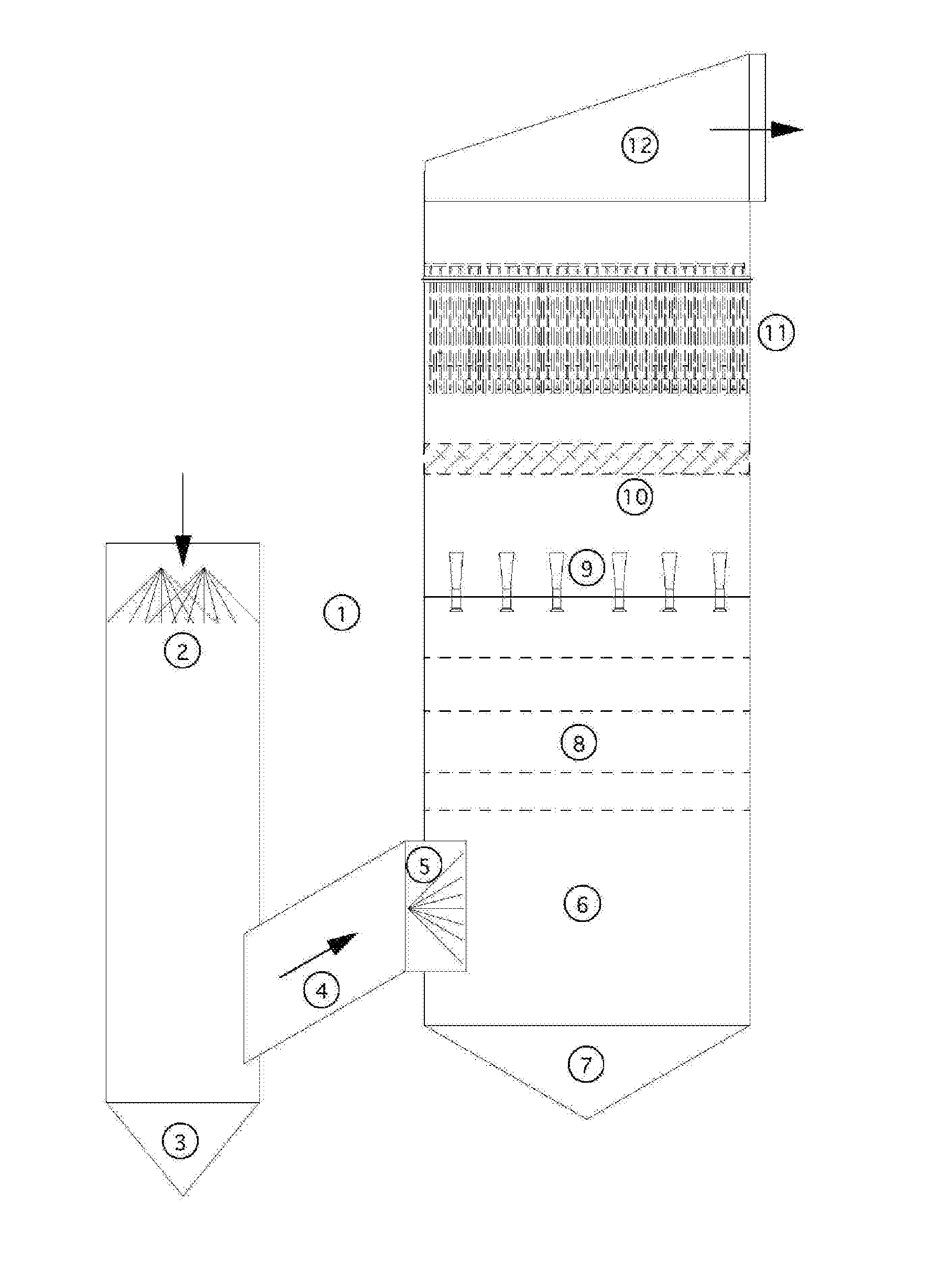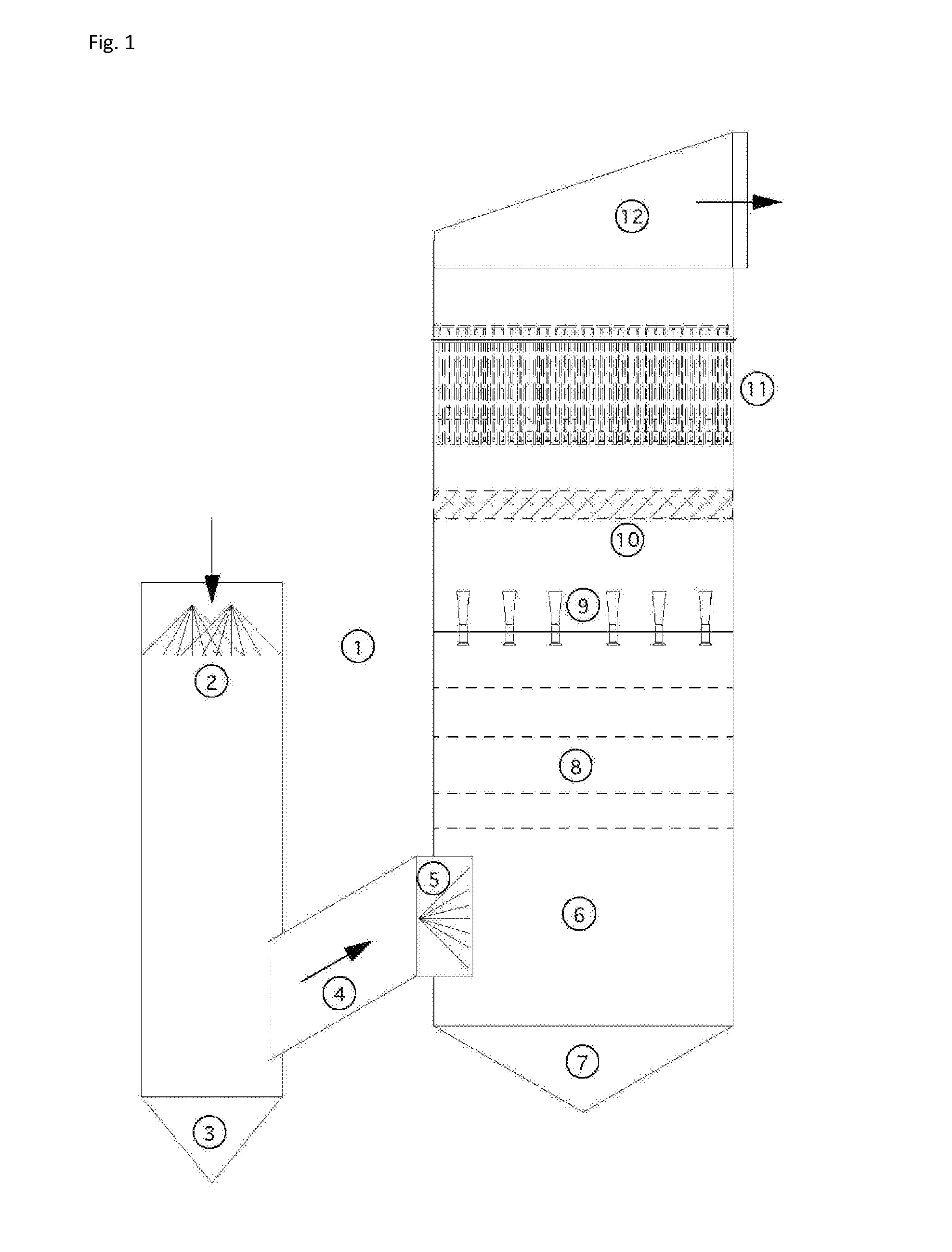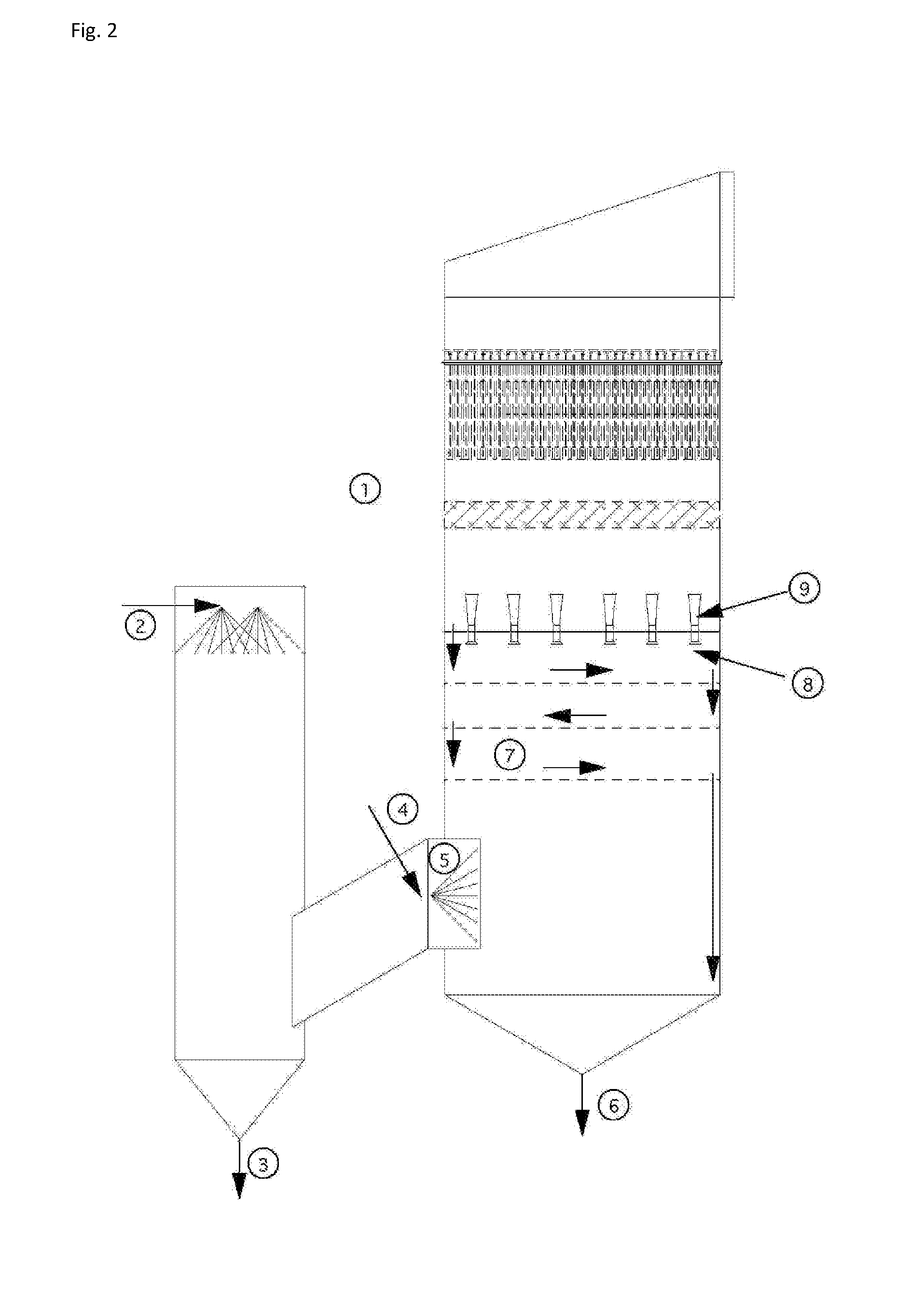An apparatus and method for particulate capture from gas streams and a method of removing soluble particulate from a gas
a technology of soluble particulate matter and gas stream, which is applied in the direction of dispersed particle separation, organic chemistry, separation processes, etc., can solve the problems of difficult removal of urea dust, low concentration of urea dust, and high operating costs of pollution control equipmen
- Summary
- Abstract
- Description
- Claims
- Application Information
AI Technical Summary
Benefits of technology
Problems solved by technology
Method used
Image
Examples
example 1
[0092]A urea granulator is proposed that has a urea-laden off-gas that needs to be scrubbed. The temperature of the air leaving the granulator is 100.5° C. and the molar fraction of water vapor is 3.1%. A quencher spray is proposed which will cool the air by evaporation until the airflow is saturated and water no longer evaporates. Using thermodynamic calculations in combination with steam tables, it is determined that this will occur at a final gas temperature of 37.2° C. with a water vapor molar fraction of 6.4% when using pure water. For this proposed project the amount of water evaporated is calculated to be 4.61 L / s. However, in practice, the quench spray will be recirculated until the urea concentration increases to around 45% by weight. At this urea concentration, the vapor pressure of water is much less. Using Raoult's Law as an estimate, the above calculations are repeated to find that the new saturated gas temperature is 39.4° C. with a water vapor molar fraction of 5.8%. ...
example 2
[0093]In a scrubber installed with only one quench, sodium sulfate is captured from the exhaust gas of a recovery boiler at a paper mill that is 221° C. with 30% moisture. When the quench water is refreshed and the concentration of sodium sulfate is kept low, the calculated saturation temperature is 74° C. with 36.5% water vapor in the gas phase. However, the paper mill prefers to cycle up the concentration of the sodium sulfate to a Baume of 16%. At this concentration, the saturation temperature climbs to 76° C. with only 36.2% moisture in the gas phase. This creates a situation where downstream evaporation continues and submicron particulate is not grown in size sufficiently. Under high Baume conditions, particulate emissions increase. A second fresh (or dilute) water quench would increase particle capture performance of the scrubber.
PUM
| Property | Measurement | Unit |
|---|---|---|
| diameter | aaaaa | aaaaa |
| diameter | aaaaa | aaaaa |
| RH | aaaaa | aaaaa |
Abstract
Description
Claims
Application Information
 Login to View More
Login to View More - R&D
- Intellectual Property
- Life Sciences
- Materials
- Tech Scout
- Unparalleled Data Quality
- Higher Quality Content
- 60% Fewer Hallucinations
Browse by: Latest US Patents, China's latest patents, Technical Efficacy Thesaurus, Application Domain, Technology Topic, Popular Technical Reports.
© 2025 PatSnap. All rights reserved.Legal|Privacy policy|Modern Slavery Act Transparency Statement|Sitemap|About US| Contact US: help@patsnap.com



